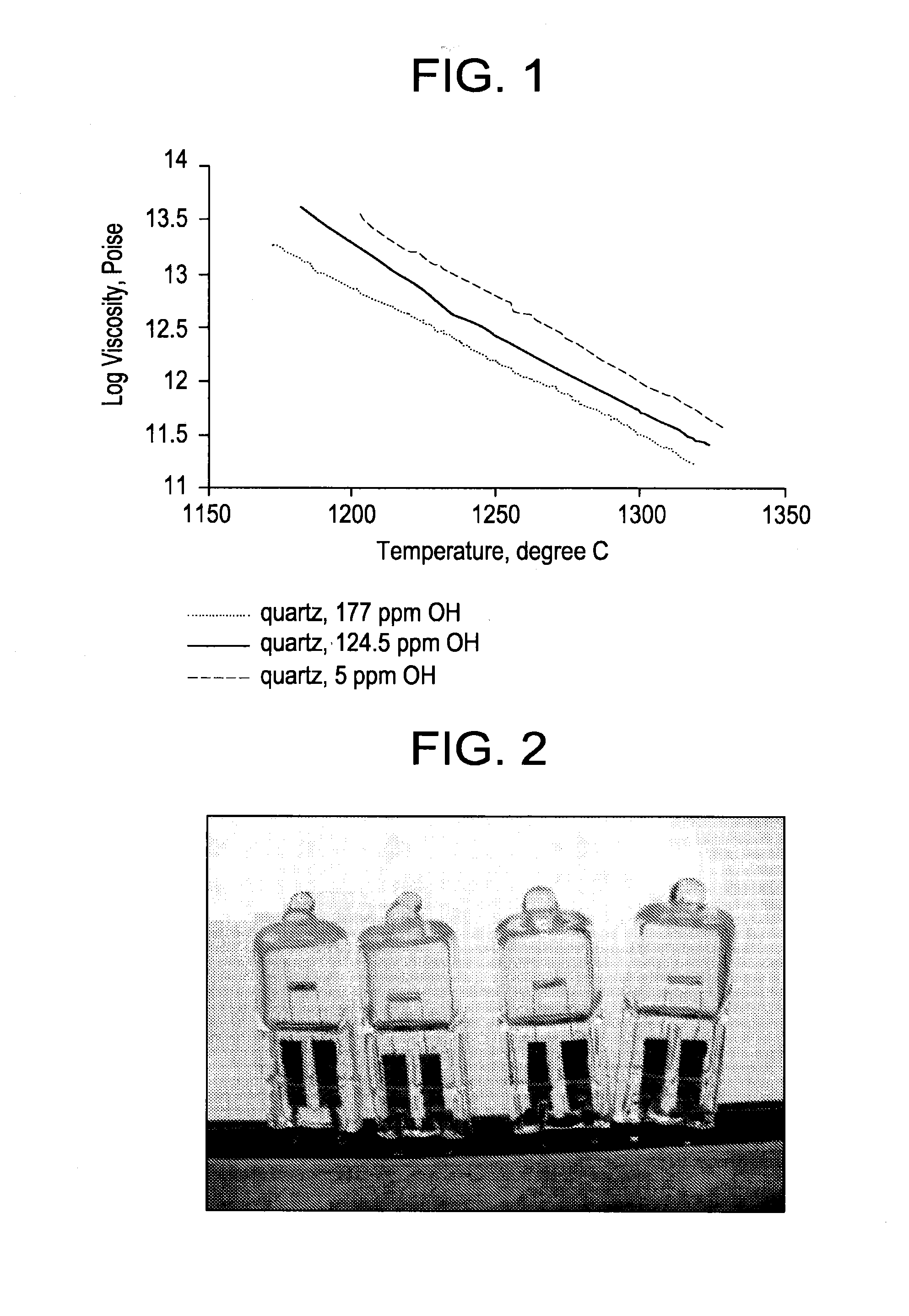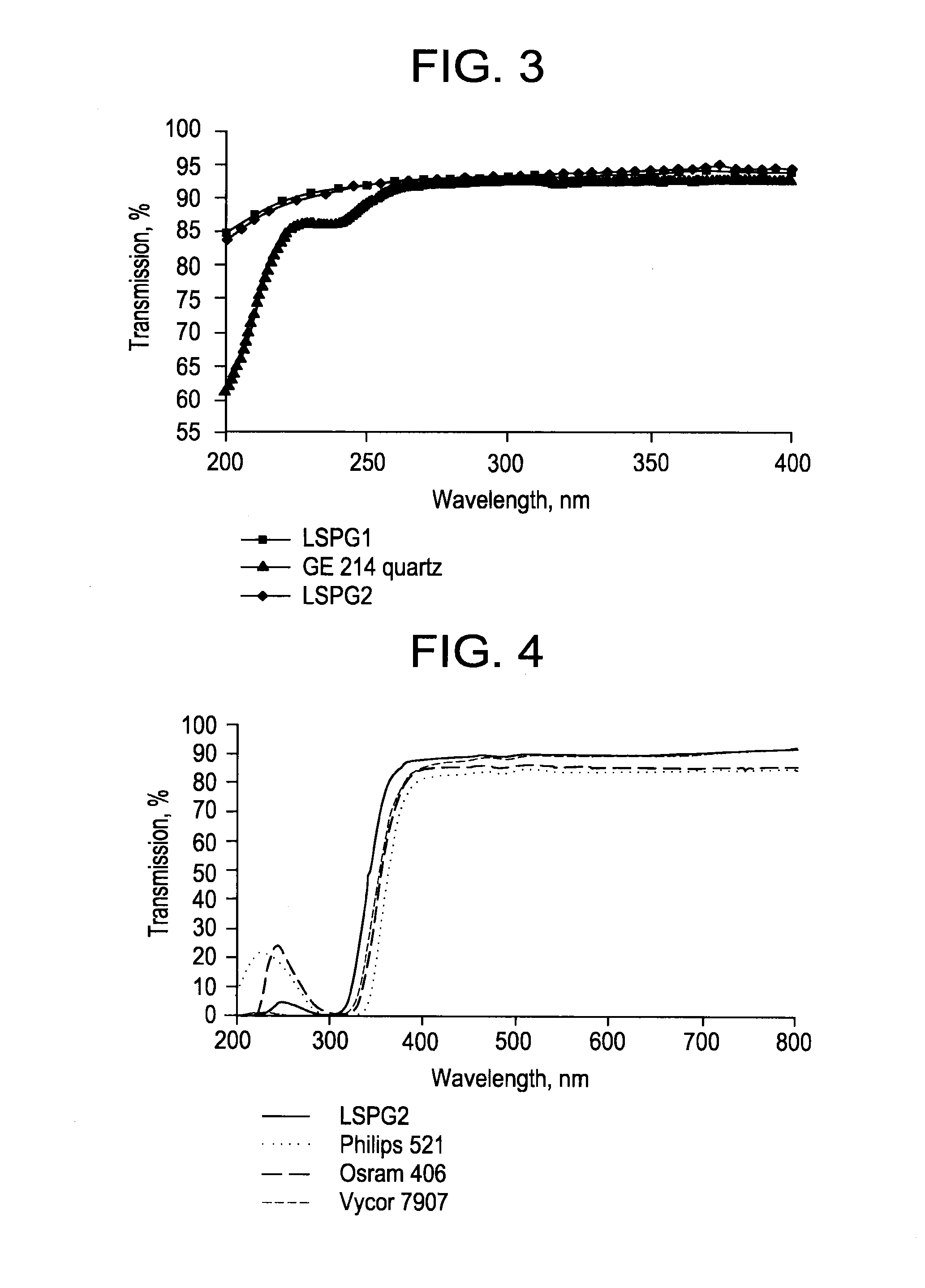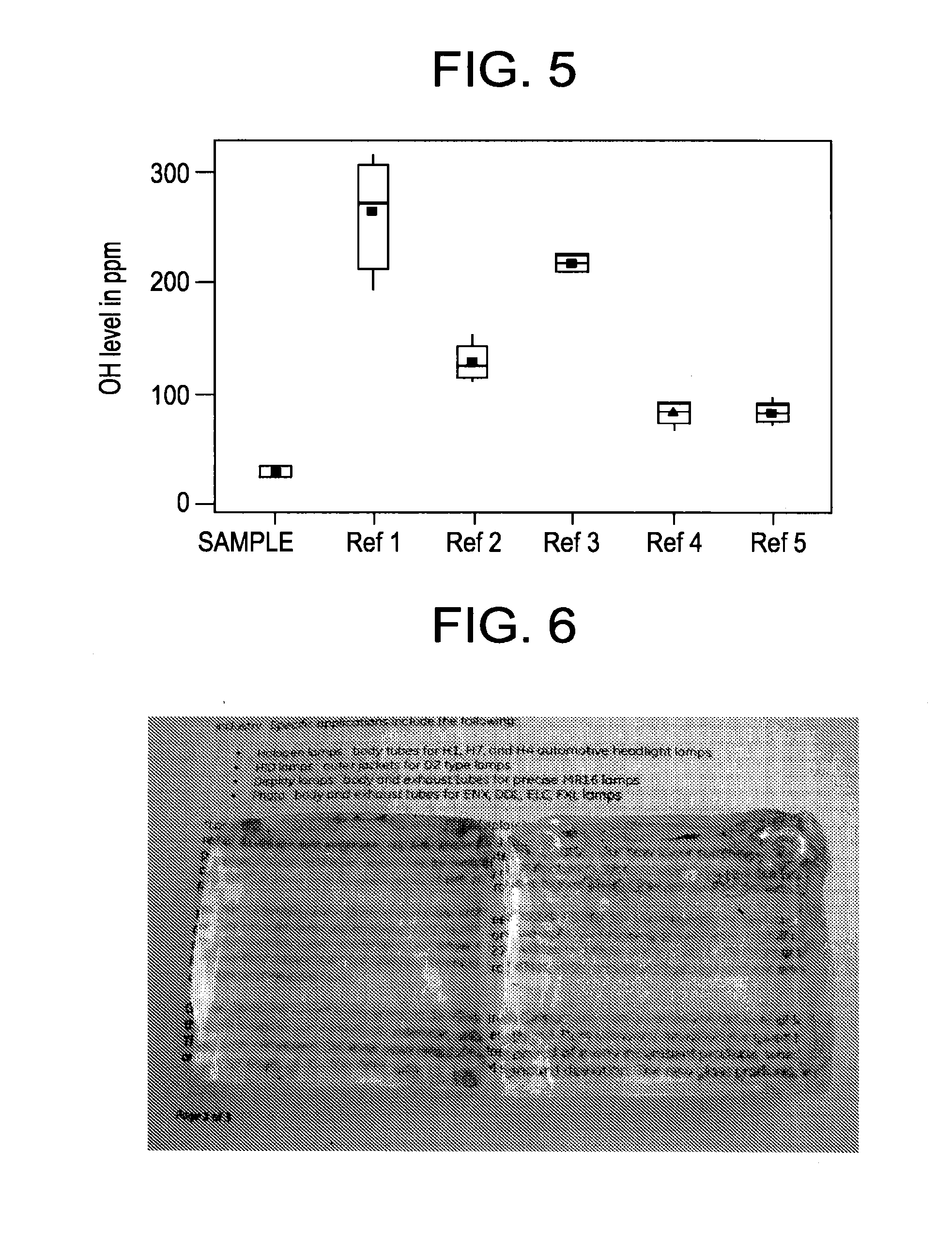Fused quartz tubing for pharmaceutical packaging
a technology of pharmaceutical packaging and quartz tubing, which is applied in the direction of pharmaceutical containers, packaging foodstuffs, packaged goods types, etc., can solve the problems of inconvenient use, inconvenient use, and inability to meet the needs of patients, so as to reduce the viscosity of glass at a particular temperature, the working point temperature and the viscosity of glass can be reduced, and the effect of low softening
- Summary
- Abstract
- Description
- Claims
- Application Information
AI Technical Summary
Benefits of technology
Problems solved by technology
Method used
Image
Examples
example 1
[0077]A glass composition is made with 96 wt. % high purity silicon dioxide, 4 wt. % Al2O3 as a dopant, and with other impurities kept at below 150 ppm. The Al2O3 dopant is first coated with 0.08 wt. % of fumed silica prior to being mixed into the batch of SiO2. The composition is then fused in a high induction furnace at 2000° C., forming quartz tubings (labeled as LSPG 1 in subsequent examples).
example 2
[0078]A UV-blocking glass composition is made with 96 wt. % high purity silicon dioxide, 4 wt. % Al2O3, 200 ppm of titanium, and 500 ppm of CeO2, with other impurities kept at below 150 ppm. The Al2O3, titanium, CeO2 dopant mixture is first coated with 0.05 wt. % of fumed silica prior to being mixed into the batch of SiO2. The composition is then fused in a high induction furnace at 2000° C., forming quartz tubings (labeled as LSPG 2 in subsequent examples).
example 3
[0079]Random samples from sections of fused quartz tubings made from the quartz glass composition LSPG1 of Example 1 were measured for OH concentration (in ppm). Random samples were also obtained from commercially available fused quartz glass tubings sold as Vycor® 7907, Vycor® 7913, and Vycor® 7921 from Corning Incorporated of Corning, N.Y. and measured for OH concentration. Standard deviations were measured and the results are as follows in Table 1:
TABLE 1Example 1Vycor 7907Vycor 7913Vycor 7921TubingTubingTubingTubing39.15241.56124.46118.8339.82277.49153.54123.6636.66267.46110.11105.4336.09267.21130.2789.3536.14251.51116.89119.2836.21268.57212.04122.62224.87224.38210.5891.4883.677.0766.9990.45Ave. OH37.345262.300136.909113.195Stand. Dev.1.68313.17157.90513.387
PUM
| Property | Measurement | Unit |
|---|---|---|
| temperature | aaaaa | aaaaa |
| wt. % | aaaaa | aaaaa |
| mean particle size | aaaaa | aaaaa |
Abstract
Description
Claims
Application Information
 Login to View More
Login to View More - R&D
- Intellectual Property
- Life Sciences
- Materials
- Tech Scout
- Unparalleled Data Quality
- Higher Quality Content
- 60% Fewer Hallucinations
Browse by: Latest US Patents, China's latest patents, Technical Efficacy Thesaurus, Application Domain, Technology Topic, Popular Technical Reports.
© 2025 PatSnap. All rights reserved.Legal|Privacy policy|Modern Slavery Act Transparency Statement|Sitemap|About US| Contact US: help@patsnap.com



